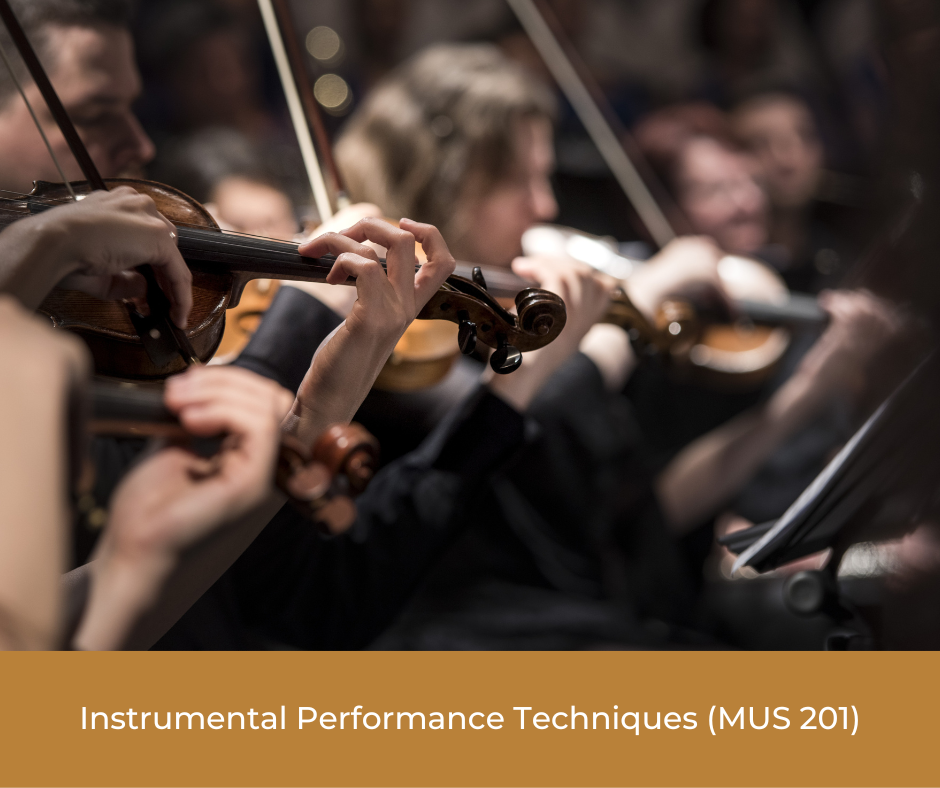Course Description – Instrumental Performance Techniques (MUS 201):
MUS 201 is a practical course designed to impart essential instrumental performance skills to students. It offers hands-on instruction tailored to the specific musical instrument chosen by each student. The course emphasizes fundamental techniques, including proper posture, fingering, and tone production, laying the foundation for proficient instrumental performance.
Outline of Major Content Areas:
- Instrument Selection and Setup:
- Guidance on selecting an appropriate musical instrument.
- Instrument maintenance, tuning, and setup.
- Posture and Ergonomics:
- Importance of correct posture during instrumental performance.
- Ergonomic principles to prevent strain and injury.
- Basic Techniques and Fingerings:
- Development of finger dexterity and control.
- Mastery of basic fingering techniques for the chosen instrument.
- Tone Production:
- Understanding the nuances of producing quality tones.
- Techniques for achieving desired tonal characteristics.
- Articulation and Expression:
- Study of articulation methods, such as staccato and legato.
- Expressive techniques to convey musical emotions.
Course Learning Outcomes:
Upon successful completion of MUS 201, students will be able to:
- Select, maintain, and set up their chosen musical instrument effectively.
- Demonstrate proper posture and ergonomics to ensure comfortable and sustainable instrumental performance.
- Execute fundamental fingering techniques with precision and control.
- Produce quality tones on their instrument, understanding tone production principles.
- Employ articulation and expression techniques to convey musical nuances in their performances.
Methods for Assessing Student Learning:
Assessment in this course will be conducted through a combination of practical evaluations and theoretical assessments, including:
- Performance Evaluations: Regular assessments of instrumental performance skills.
- Instrument Maintenance Reports: Documentation of instrument care and maintenance.
- Written Assignments: Reflective essays on posture, ergonomics, and tone production.
- Listening Exercises: Analysis of professional instrumental performances.
- Class Participation: Active engagement in practical exercises and discussions.
Through these assessments, students will not only develop instrumental proficiency but also gain a deeper understanding of the mechanics and artistry involved in instrumental performance.
